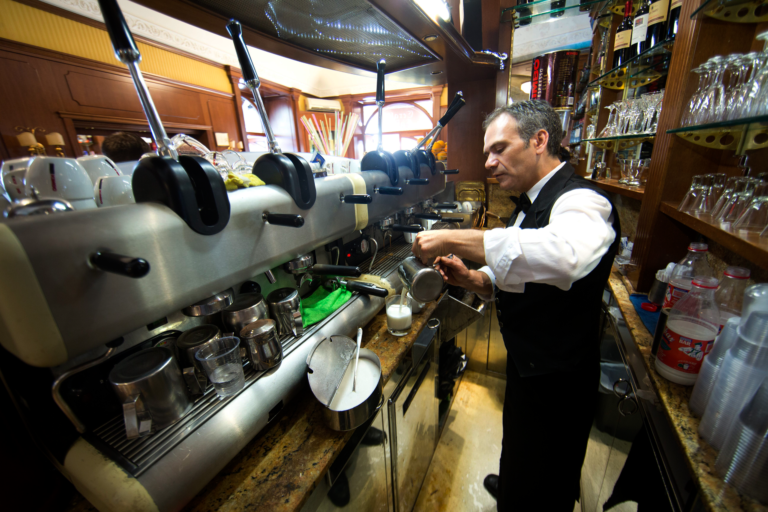Experience Royal Naples
The Kingdom of Naples endured in one form or another from 1282 until 1816, withstanding enormous political upheavals and centuries of change in Europe. From medieval times through the Renaissance, Naples held enormous power and influence over the region. This regal past still influences daily life in Naples, with the history, culture, architecture, and prestige of greatness everywhere.
Castle Nuovo
Perhaps nowhere is the history and vibrancy of Royal Naples more apparent than at the Castle Nuovo. In 1266, Charles I of Anjou became the new King of Sicily and transferred the capital from Palermo to Naples. The Castle Capuano was the historic royal residence, but Charles wanted a new castle near the sea. So he commissioned French architect Pierre de Chaulnes to build him a new castle. Though the castle was completed in just three years, Charles himself lost the throne before he could ever live there. In 1285, Charles II of Naples moved his family and court to Castle Nuovo, beginning a centuries long process of expanding, renovating, and improving the castle, as each successive king and queen made their own modifications and left his mark on the castle.
Castle Nuovo has been the site of many of the most important political and social events, not just in Italy, but arguably in Europe itself. It was the site of the famous “great refusal” of Pope Celestine V abdicating the papacy, the place where King Ferdinand I finally defeated the Conspiracy of the Barons, and was the place where the Neapolitan Republic was declared in 1799. While it was continually renovated and revised, expanded and defended, and looted on a few occasions, Castle Nuovo never fell to an enemy in combat.
As a result, it is today a living monument to the history of the Kingdom of Naples, a building where every king, pope, artist, architect, and artisan of every age left their mark, and where this legacy is visible and vibrant.
Today, the castle hosts historic societies, cultural events, and is the site of the Civic Museum. A visit to the museum not only offers a tour of the castle itself, including the prisons, the Armory, and the chapels, but also includes exhibitions of the art and artifacts of Naples during the long history of the castle. When visiting the museum, make sure you ask about a visit to Beverello’s Tower, available based on inquiry, staff availability, and a maximum number of guests at the moment. The tower offers unrivaled views of Piazza Municipo and Naples itself.
Palazzo Reale
The Royal Palace of Naples was residence for the Bourbon kings, and, like Castel Nuovo, was repeatedly remodeled, expanded, modernized, and embellished by a succession of rulers from 1734 until 1860. While the Castle Nuovo lives up to its medieval heritage, Palazzo Reale is a monument to baroque and neoclassical Europe, rich with porcelain, tapestries, sculpture, and paintings. It is home to a museum of the Historical Apartments, and visitors can see the furnishings, possessions, and lifestyles of the Bourbon kings of Naples, including the incredible baroque Teatro di Corte, the Palatine Chapel, and the Throne Room. The Palazzo Reale is also home to not one, but two incredible libraries. The Biblioteca Nazionale is home to priceless historic manuscripts, most notably 2000 ancient papyri discovered at Herculaneum, and fragments of a Coptic Bible dating to the 5th century. The Biblioteca Lucchesi Palli is also in the Palazzo Reale, and is a gorgeous classic 19th century library, with incredibly personal artifacts from the history of Naples, including personal letters by Giuseppe Verdi.
The imperial past and history of Naples is evident all around you, from the castles that dominate views and palazzos that speak of wealth and luxury. Immersing yourself in the royal past is an unforgettable experience in Naples, and should be on your list of things to do.



